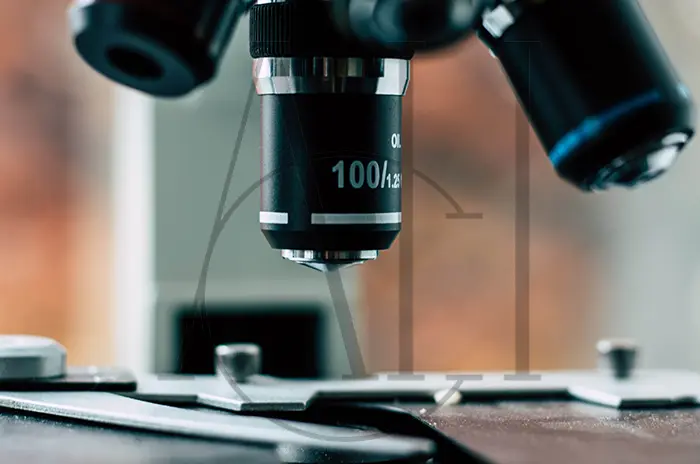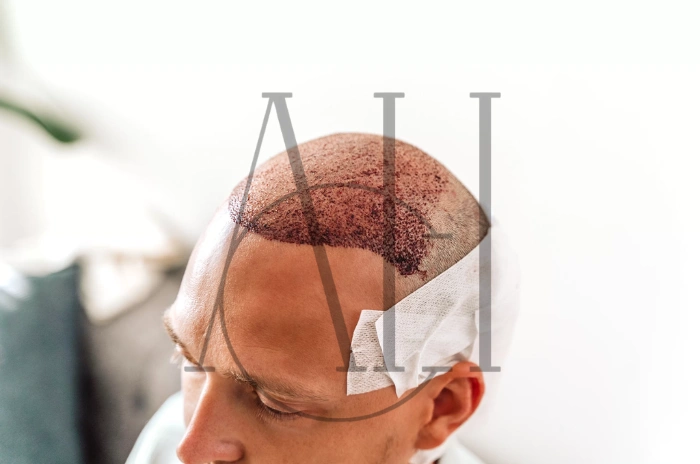Hair follicle drug testing has become increasingly popular among employers, healthcare providers, and legal professionals due to its extended detection window and high accuracy rates. Unlike urine or saliva tests, hair follicle testing can detect drug use from several months prior, making it a comprehensive screening method for various purposes including employment screening, legal proceedings, and healthcare monitoring.
Table of Contents
ToggleWhat is a hair follicle drug test?
A hair follicle drug test is a laboratory-based screening method that analyzes a small sample of hair to detect the presence of drugs or their metabolites. When drugs are consumed, they enter the bloodstream and are eventually incorporated into the hair shaft as it grows. This process creates a permanent record of drug use that can be detected for months after consumption.
The test typically requires a hair sample about 1.5 inches long and the thickness of a pencil, usually collected from the crown of the head. If head hair is unavailable or insufficient, body hair from the arms, legs, chest, or other areas can be used as an alternative. The hair sample undergoes sophisticated laboratory analysis using advanced techniques to identify specific drug compounds and their metabolites.
Why are hair follicle drug tests necessary?
Hair follicle drug tests serve multiple important purposes across various sectors:
Employment and Workplace Safety:
- Essential for safety-sensitive positions in transportation, healthcare, and manufacturing
- Pre-employment screening to ensure drug-free workplace
- Random testing programs for ongoing monitoring
- Post-accident investigations to determine contributing factors
Legal and Judicial Applications:
- Court-ordered testing for legal proceedings
- Probation and parole monitoring
- Child custody evaluations
- Criminal justice system requirements
Healthcare and Treatment:
- Patient compliance monitoring in treatment programs
- Substance abuse assessment and evaluation
- Clinical research applications
- Medical-legal documentation
The extended detection window makes hair testing particularly valuable when a comprehensive view of drug use patterns is required for making informed decisions about employment, legal matters, or treatment plans.
What happens during a hair follicle test?
The hair follicle test collection process is straightforward, non-invasive, and typically completed within minutes. A trained collector begins by verifying the individual’s identity and explaining the procedure. They then cut approximately 100-120 strands of hair from the crown of the head, as close to the scalp as possible to ensure the most recent growth period is captured.
The hair sample is immediately placed in a sealed collection container and labeled with proper identifying information. The entire process maintains strict chain of custody protocols to ensure sample integrity and legal defensibility. If the individual has insufficient head hair (less than 1.5 inches), the collector will obtain body hair samples from multiple locations to ensure adequate specimen volume for accurate testing.
How to use a home hair follicle drug test
Home hair follicle drug test kits are available for personal use, though they may not be accepted for legal or employment purposes. To use a home test, carefully read all instructions provided with the kit and follow them precisely.
Cut the required amount of hair (typically 100-120 strands) from the crown of the head, as close to the scalp as possible. Place the sample in the provided collection envelope, ensuring proper sealing and labeling according to kit instructions. Mail the sample to the designated laboratory using the prepaid shipping materials included in the kit.
Results are typically available within 3-5 business days through secure online portals or phone systems. Keep in mind that home tests may have limitations in terms of accuracy and legal acceptance compared to professionally collected samples in certified facilities.
What do the results mean?
Hair follicle drug test results are reported in three possible categories, each with specific implications:
Negative
A negative result indicates that no drugs or drug metabolites were detected in the hair sample above the established cutoff levels. This suggests that the individual either did not use drugs during the detection window or used amounts below the test’s sensitivity threshold. Negative results provide confidence in the absence of detectable drug use.
Positive
A positive result confirms the presence of one or more drugs or their metabolites in the hair sample above the cutoff levels. This indicates drug use during the approximate 90-day detection window. All positive results typically undergo additional confirmatory testing using more sophisticated analytical methods to ensure accuracy and eliminate false positives.
Inconclusive
An inconclusive result occurs when the laboratory cannot provide a definitive positive or negative determination. This may happen due to insufficient sample quantity, improper collection procedures, sample contamination, or technical issues during testing. In such cases, a retest with a new sample is usually required to obtain valid results.
What is required for a hair drug test sample?
A proper hair drug test sample requires specific characteristics to ensure accurate and reliable results:
Standard Sample Requirements:
- Approximately 100-120 hair strands
- Minimum length of 1.5 inches from the root end
- Hair cut as close to the scalp as possible
- Clean hair free from excessive styling products
Alternative Sample Options:
- Body hair when head hair is insufficient
- Combined samples from multiple body locations
- Minimum sample mass of 60-80 milligrams required
Head hair from the crown area is preferred due to its consistent growth rate and minimal exposure to environmental contamination factors. The laboratory needs sufficient sample volume to perform both initial screening and confirmatory testing if necessary.
What Drugs Can Be Detected in a Hair Drug Test?
Hair follicle drug tests can detect a comprehensive range of substances, making them versatile screening tools:
|
Drug Category |
Specific Substances |
Detection Window |
Common Sources |
|
Cocaine |
Cocaine, Benzoylecgonine |
Up to 90 days |
Powder cocaine, crack cocaine |
|
Marijuana |
THC, THC-COOH |
Up to 90 days |
Cannabis, marijuana products |
|
Opiates |
Heroin, Morphine, Codeine |
Up to 90 days |
Heroin, prescription painkillers |
|
Amphetamines |
Methamphetamine, MDMA |
Up to 90 days |
Crystal meth, ecstasy, prescription stimulants |
|
Phencyclidine |
PCP |
Up to 90 days |
Angel dust, PCP |
Extended Testing Capabilities:
- Prescription medications (benzodiazepines, barbiturates)
- Synthetic drugs and designer substances
- Alcohol markers (EtG testing available)
- Specialized panels for specific requirements

What are the hair drug test time frames?
Understanding the timeframes associated with hair drug testing is crucial for accurate result interpretation:
Detection Window Breakdown:
- Standard Detection Period: 90 days (approximately 3 months)
- Hair Growth Rate: 0.5 inches per month on average
- Sample Length Significance: 1.5 inches represents 90 days of growth
- Drug Incorporation Time: 5-10 days after consumption
- Detectable Period: 2-3 weeks after initial drug use
Important Timeline Considerations:
- Recent drug use within 2-3 weeks may not be detected
- Chronic use patterns are more easily identified
- Hair growth rates vary among individuals
- Body hair may have different detection timeframes
Understanding your results
Proper interpretation of hair follicle drug test results requires understanding several key factors:
Cutoff Levels and Their Significance:
- Each drug category has specific cutoff concentrations
- Results below cutoff levels are reported as negative
- Results above cutoff levels are reported as positive
- Cutoffs are designed to prevent false positives from passive exposure
Result Analysis Components:
- Qualitative results (positive/negative determination)
- Quantitative data showing concentration levels
- Confirmation testing for all positive results
- Chain of custody documentation for legal validity
How accurate are hair follicle drug test?
Hair follicle drug tests demonstrate exceptional accuracy when performed by certified laboratories:
|
Accuracy Metric |
Percentage |
Description |
|
Overall Accuracy |
99%+ |
Combined sensitivity and specificity |
|
Sensitivity |
95-99% |
Correctly identifying positive cases |
|
Specificity |
99%+ |
Correctly identifying negative cases |
|
False Positive Rate |
<1% |
Incorrect positive results |
|
False Negative Rate |
2-5% |
Missed positive cases |
Factors Contributing to High Accuracy:
- Advanced analytical instrumentation
- Two-step testing process (screening + confirmation)
- Certified laboratory standards and protocols
- Regular quality control and proficiency testing
- Trained laboratory personnel and procedures
How much does the test cost?
The cost of hair follicle drug testing varies based on several factors:
Typical Cost Ranges:
- Basic 5-Panel Test: $75-$150
- Extended Panel Test: $150-$300
- Collection Service Fees: $25-$50
- Laboratory Processing: Included in test price
- Rush Processing: Additional $50-$100
Cost-Influencing Factors:
- Number of drugs included in testing panel
- Geographic location and local market rates
- Volume discounts for employers and organizations
- Additional services like rapid results or legal documentation
How accurate is the test?
Hair follicle drug tests maintain industry-leading accuracy through multiple quality assurance measures:
Accuracy Assurance Methods:
- Initial immunoassay screening followed by confirmatory testing
- Gas chromatography-mass spectrometry (GC-MS) confirmation
- Strict laboratory certification requirements
- Regular calibration and validation procedures
- Comprehensive quality control programs
Potential Accuracy Limitations:
- Very light or infrequent drug use may fall below detection thresholds
- Environmental contamination (extremely rare with proper protocols)
- Individual biological variations in hair growth and drug incorporation
- Certain medical conditions or treatments (minimal impact)
Purpose of the hair follicle drug tests
Hair follicle drug tests serve diverse purposes across multiple sectors:
Employment Applications:
- Pre-employment screening for new hires
- Random testing in safety-sensitive positions
- Post-accident investigation protocols
- Return-to-duty evaluations after violations
- Periodic monitoring in high-risk occupations
Legal and Judicial Uses:
- Court-ordered testing in legal proceedings
- Probation and parole compliance monitoring
- Child custody and family court evaluations
- Criminal justice system applications
- Legal documentation for various proceedings
When should I get a hair follicle drug test?
Consider hair follicle drug testing in these situations:
Individual Circumstances:
- Pre-employment testing requirements
- Personal verification of drug-free status
- Legal compliance obligations
- Peace of mind or self-assessment
- Preparation for upcoming testing
Organizational Needs:
- Safety-sensitive position screening
- Workplace incident investigations
- Regulatory compliance requirements
- Insurance or liability considerations
How Long Before Drugs Appear in Hair?
The biological process of drug detection in hair follows a predictable timeline:
Detection Development Process:
- Drug Consumption: Day 0 – substances enter bloodstream
- Systemic Circulation: Hours – drugs circulate throughout body
- Hair Follicle Incorporation: 5-10 days – drugs enter growing hair
- Hair Growth Above Scalp: 7-14 days – hair becomes collectable
- Detectable in Testing: 2-3 weeks total – minimum detection window
Factors Affecting Detection Timeline:
- Individual hair growth rates and patterns
- Frequency and amount of drug consumption
- Specific drug characteristics and metabolism
- Hair color and texture variations
When should the hair drug test be used?
Hair drug testing is most appropriate in specific circumstances:
Optimal Application Scenarios:
- When extended detection window is required (90 days vs. 1-3 days for urine)
- Legal proceedings requiring historical drug use evidence
- Safety-sensitive positions where comprehensive screening is essential
- Situations where sample collection supervision is difficult
- When cheating or adulterating other test types is a concern
Preferred Over Other Methods When:
- Long-term drug use patterns need assessment
- Court-admissible evidence is required
- Non-invasive collection is preferred
- Comprehensive multi-drug screening is needed
Hair Follicle Drug Test Results
Understanding result reporting and timeframes:
Result Processing Timeline:
- Initial Screening: 1-3 business days after laboratory receipt
- Confirmation Testing: 2-5 additional days for positive results
- Final Report Generation: 3-7 business days total processing time
- Rush Services: Available for expedited results (additional cost)
Result Delivery Methods:
- Secure online portals with access codes
- Phone verification systems with personal identification
- Certified mail delivery to designated recipients
- Direct employer or organization notification systems
Are test results accurate?
Hair follicle drug test results maintain exceptional accuracy through comprehensive quality measures:
Accuracy Verification Process:
- Initial immunoassay screening with high sensitivity
- Confirmatory testing using advanced analytical methods
- Strict chain of custody documentation throughout process
- Regular laboratory audits and certification maintenance
- Ongoing proficiency testing and quality assurance programs
Result Reliability Factors:
- Use of certified reference materials and standards
- Trained and certified laboratory personnel
- State-of-the-art analytical instrumentation
- Comprehensive standard operating procedures
Why Employers Choose Hair Drug Testing?
Employers increasingly prefer hair drug testing for compelling business reasons:
Primary Business Advantages:
- Extended Detection Window: 90-day drug use history vs. 1-3 days for urine
- Tamper Resistance: Extremely difficult to cheat or substitute samples
- Non-Invasive Collection: No observed collection or privacy concerns
- Comprehensive Screening: Detects multiple drug categories simultaneously
- Cost-Effectiveness: Fewer retests and administrative burden
- Legal Defensibility: Court-admissible results with proper chain of custody
Operational Benefits:
- Reduced workplace accidents and safety incidents
- Lower workers’ compensation and insurance costs
- Improved employee productivity and performance
- Enhanced company reputation and regulatory compliance
- Stronger legal protection in employment decisions
FAQ
What is a hair follicle drug test and how does it work?
A hair follicle drug test analyzes hair samples to detect drug use over the past 90 days. When drugs are consumed, they enter the bloodstream and become incorporated into growing hair, creating a detectable record that can be analyzed using sophisticated laboratory techniques.
What drugs can be detected in a hair drug test?
Standard 5-panel tests detect cocaine, marijuana (THC), opiates, amphetamines, and PCP. Extended panels can identify additional substances including prescription medications, synthetic drugs, and other controlled substances depending on the specific testing requirements.
How long does a hair follicle drug test detect drug use?
Hair follicle tests can detect drug use for approximately 90 days prior to the test date. This detection window is based on average hair growth rates of 0.5 inches per month, with the standard 1.5-inch sample representing about three months of hair growth.
How accurate are hair follicle drug tests?
Hair follicle drug tests are highly accurate with overall accuracy rates exceeding 99%. They have false positive rates of less than 1% and false negative rates of 2-5%. This high accuracy is achieved through two-step testing processes and certified laboratory analysis.
What happens during a hair follicle drug test collection?
During collection, a trained technician cuts approximately 100-120 hair strands from the crown of the head, as close to the scalp as possible. The process is quick, non-invasive, takes only a few minutes, and maintains strict chain of custody protocols.
Can bleaching, dyeing, or other hair treatments affect the test results?
Normal hair treatments like bleaching, dyeing, perming, or straightening have minimal impact on test results. While these treatments may slightly reduce drug concentrations, they rarely cause false negative results as laboratories use appropriate testing protocols.
How long does it take for drugs to appear in hair after use?
Drugs typically appear in testable hair approximately 2-3 weeks after use. This timeframe includes 5-10 days for drug incorporation into the hair follicle and another 7-14 days for the hair to grow above the scalp surface.
Why do employers choose hair drug testing over other methods?
Employers prefer hair drug testing for its 90-day detection window, difficulty to cheat, comprehensive drug coverage, cost-effectiveness, and legal defensibility. It provides a more complete picture of drug use patterns compared to shorter detection windows of other testing methods.




